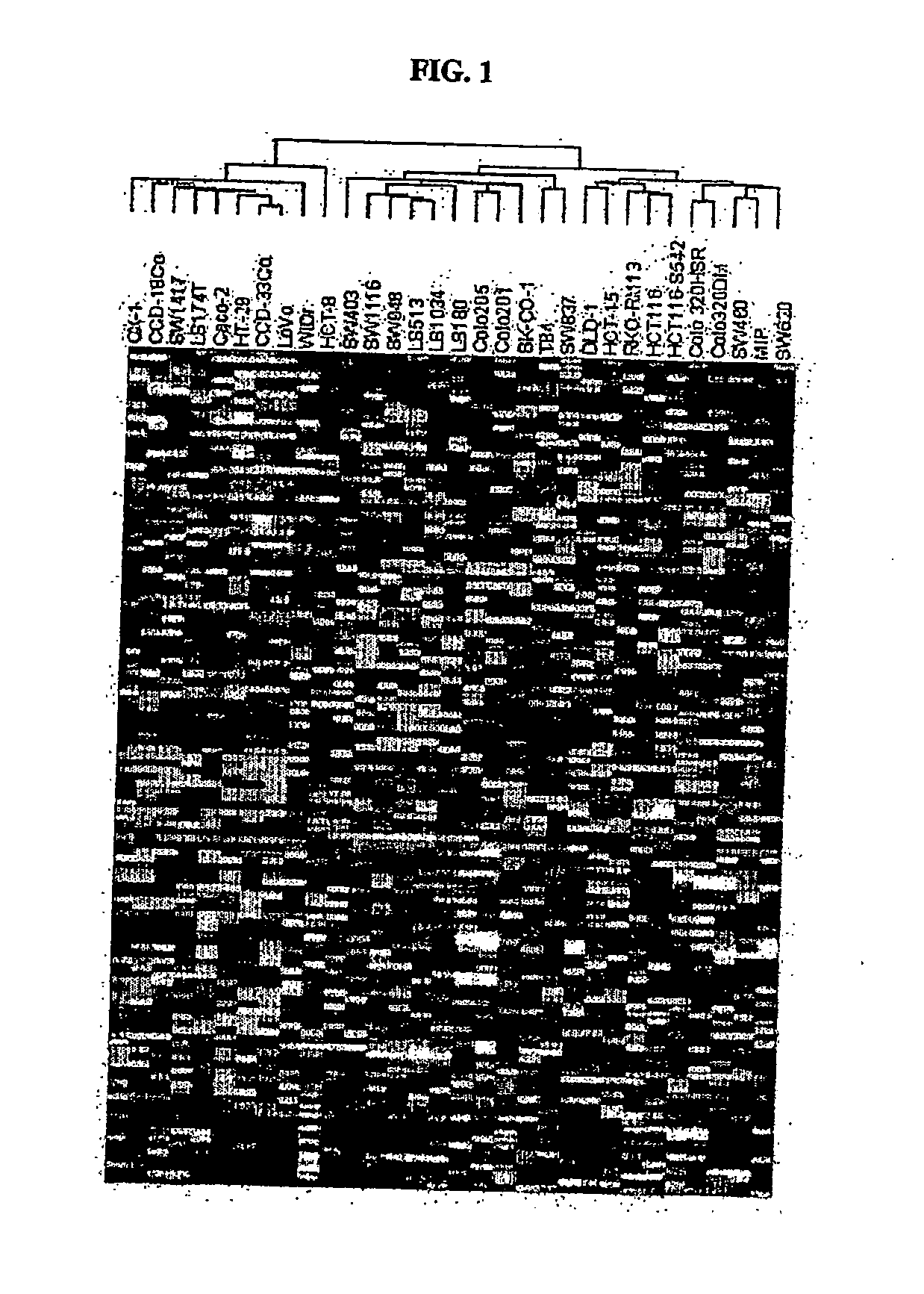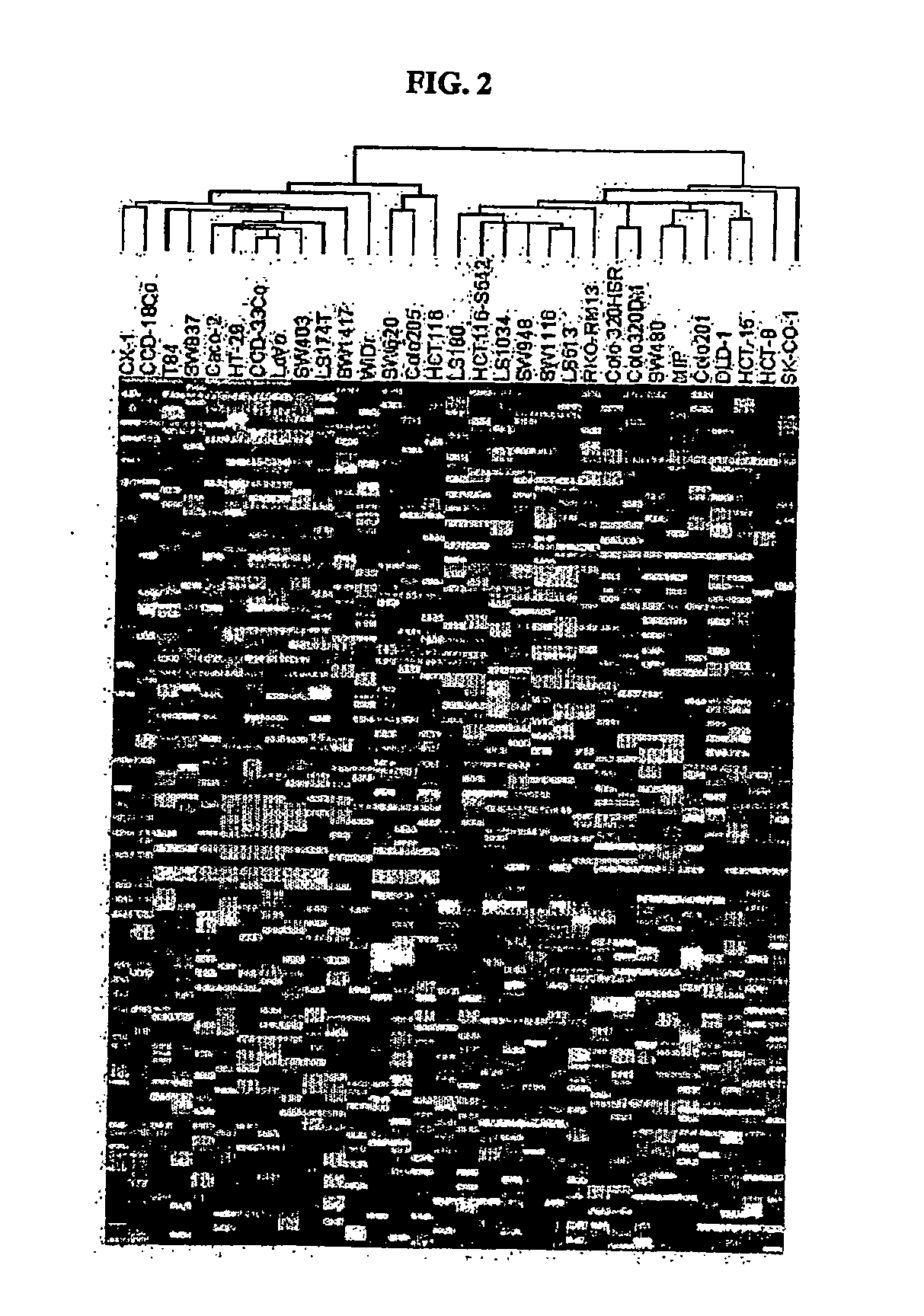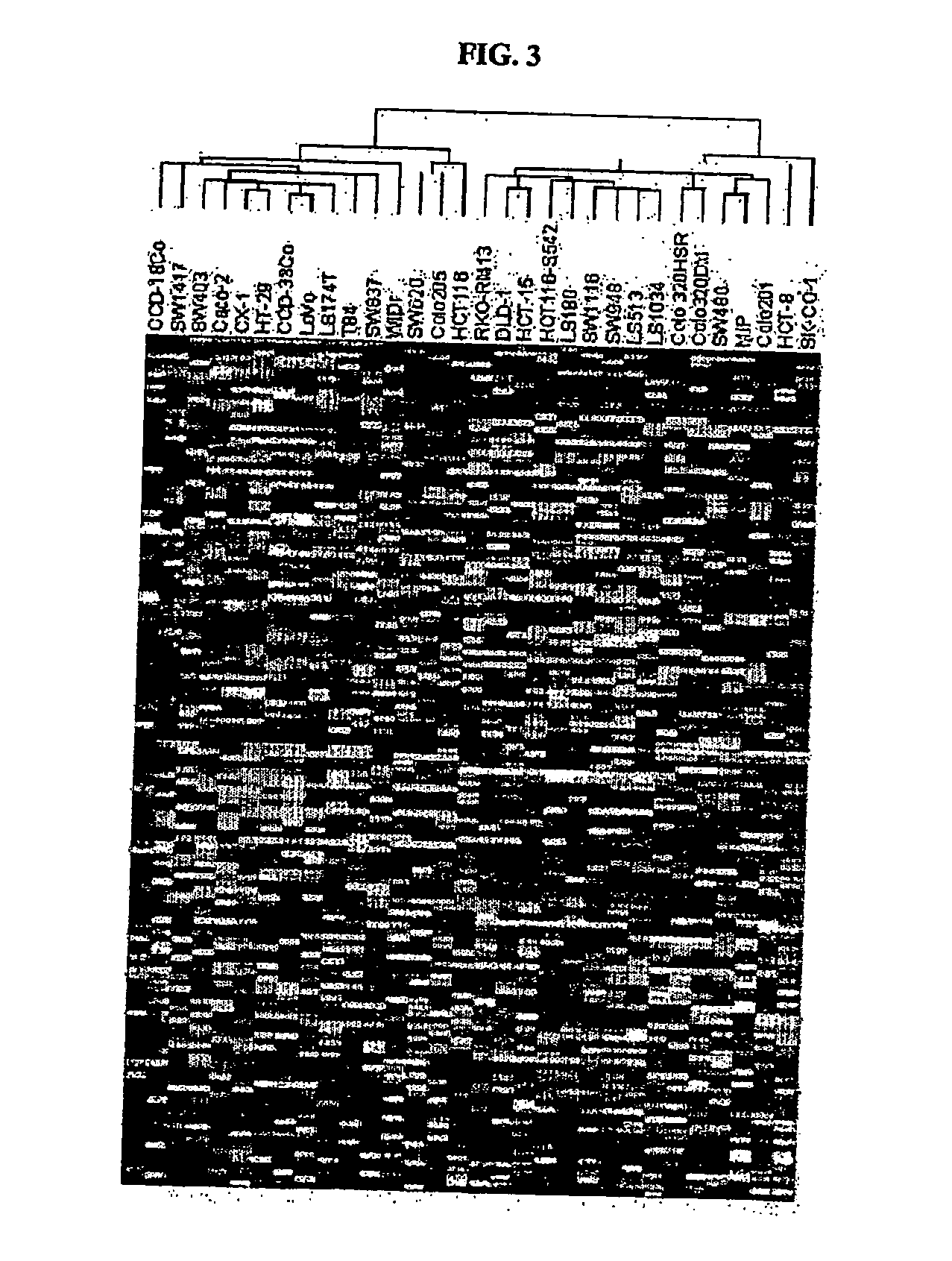Identification of polynucleotides and polypetide for predicting activity of compounds that interact with protein tyrosine kinase and or protein tyrosine kinase pathways
- Summary
- Abstract
- Description
- Claims
- Application Information
AI Technical Summary
Benefits of technology
Problems solved by technology
Method used
Image
Examples
example 1
Methods
IC50 Determination—In Vitro Cytotoxicity Assay
[0268] Src tyrosine kinase inhibitor compounds (described in WO 00 / 62778, published Oct. 26, 2000) were tested for cytotoxicity in vitro against a panel of thirty-one human colon cell lines available from the American Type Culture Collection, ATCC, except CX-1 and MIP, which were obtained from academic investigators. Cytotoxicity was assessed in cells by the MTS (3-(4,5-dimethylthiazol-2-yl)-5-(3-carboxymethoxyphenyl)2-(4-sulphenyl)-2H-tetrazolium, inner salt) assay (T. L. Riss et al., 1992, Mol. Biol. Cell, 3 (Suppl.): 184a).
[0269] To carry out the assays, the colon cells were plated at 4,000 cells / well in 96 well microtiter plates and 24 hours later serial diluted drugs were added. The concentration range for the src compounds used in the cytotoxicity assay was from 5 μg / ml to 0.0016 μg / ml (roughly 10 μM to 0.0032 μM). The cells were incubated at 37° C. for 72 hours at which time the tetrazolium dye, MTS (333 μg / ml final conc...
example 2
PCR Expression Profiling
[0282] RNA quantification is performed using the Taqman® real-time-PCR fluorogenic assay. The Taqman® assay is one of the most precise methods for assaying the concentration of nucleic acid templates.
[0283] All cell lines are grown using standard cell culture conditions: RPMI 1640 supplemented to contain 10% fetal bovine serum, 100 IU / ml penicillin, 100 mg / ml streptomycin, 2 mM L-glutamine and 10 mM Hepes (all from GibcoBRL, Rockville, Md.). Eighty percent confluent cells are washed twice with phosphate-buffered saline (GibcoBRL) and harvested using 0.25% trypsin (GibcoBRL). RNA is prepared using standard methods, preferably, employing the RNeasy Kit commercially available from Qiagen (Valencia, Calif.).
[0284] cDNA template for real-time PCR can be generated using the Superscript™ First Strand Synthesis system for RT-PCR. Representative forward and reverse RT-PCT primers for each of the src biomarker polynucleotides and polypeptides of the present inventio...
example 3
Production of an Antibody Directed Against Src Biomarker Polypeptides
[0291] Anti-src biomarker polypeptide antibodies of the present invention can be prepared by a variety of methods. As one example of an antibody-production method, cells expressing a polypeptide of the present invention are administered to an animal to induce the production of sera containing polyclonal antibodies directed to the expressed polypeptides. In a preferred method, the expressed protein is prepared, preferably isolated and purified, to render it substantially free of natural contaminants, using techniques commonly practiced in the art. Such a preparation is then introduced into an animal in order to produce polyclonal antisera of greater specific activity for the expressed and isolated polypeptide.
[0292] In a most preferred method, the antibodies of the present invention are monoclonal antibodies (or protein binding fragments thereof) and can be prepared using hybridoma technology as detailed hereinabo...
PUM
| Property | Measurement | Unit |
|---|---|---|
| Mass | aaaaa | aaaaa |
| Molar density | aaaaa | aaaaa |
| Molar density | aaaaa | aaaaa |
Abstract
Description
Claims
Application Information
 Login to View More
Login to View More - R&D
- Intellectual Property
- Life Sciences
- Materials
- Tech Scout
- Unparalleled Data Quality
- Higher Quality Content
- 60% Fewer Hallucinations
Browse by: Latest US Patents, China's latest patents, Technical Efficacy Thesaurus, Application Domain, Technology Topic, Popular Technical Reports.
© 2025 PatSnap. All rights reserved.Legal|Privacy policy|Modern Slavery Act Transparency Statement|Sitemap|About US| Contact US: help@patsnap.com



